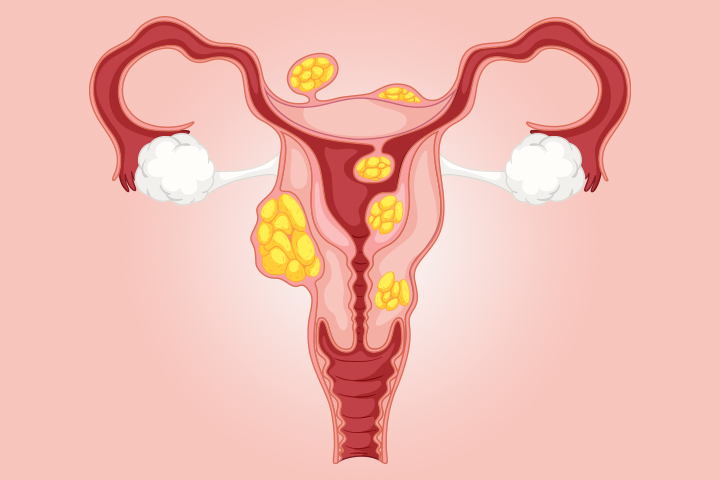Understanding uterine fibroids symptoms, treatment options and the benefits of non surgical treatment uterine artery embolization
Uterine fibroids, also known as leiomyomas, are benign (non-cancerous) tumors that develop within the muscle tissue of the uterus. They are common among women of reproductive age and can vary in size from very small to large enough to cause significant discomfort. While many women with fibroids experience no symptoms, others may have noticeable issues that can affect their daily lives. Understanding the symptoms and treatment options, including the benefits of Uterine Artery Embolization (UAE), can help women manage this condition more effectively.
Symptoms of Uterine Fibroids:
Uterine fibroids often present with a wide range of
symptoms, depending on their size, number, and location in the uterus. Common
symptoms include:
- Heavy
or Prolonged Menstrual Bleeding: Some women experience unusually heavy
periods, often with blood clots.
- Pelvic
Pain or Pressure: Large fibroids may press on surrounding organs,
causing discomfort or pain in the lower abdomen.
- Frequent
Urination: Fibroids can press on the bladder, causing the need to
urinate more often.
- Constipation
or Bloating: Pressure on the bowels can lead to difficulty with bowel
movements.
- Pain
During Intercourse: Fibroids located near the cervix or within the
uterus may make intercourse painful.
- Back
or Leg Pain: Large fibroids can put pressure on nerves, leading to
pain in the lower back or legs.
- Difficulty
Conceiving: In some cases, fibroids can interfere with fertility or
complicate pregnancy.
While these symptoms can significantly affect a woman’s quality of life, the good news is that several treatment options are available, including non-invasive procedures.
Treatment Options for Uterine Fibroids:
The treatment approach for uterine fibroids depends on
various factors, such as the severity of the symptoms, the size of the
fibroids, and whether the woman wants to preserve her fertility. Common
treatment options include:
- Surgical
Options:
- Myomectomy:
This surgical procedure removes fibroids while preserving the uterus,
making it ideal for women who want to maintain fertility.
- Hysterectomy:
In cases of severe fibroid-related symptoms, removing the uterus may be
necessary. This option eliminates fibroids permanently but ends a woman’s
ability to conceive.
- Non-Surgical
Treatments:
- Uterine Artery Embolization (UAE): A highly effective, minimally invasive procedure that targets fibroids without surgery.
The Benefits of Uterine Artery Embolization (UAE):
Uterine Artery Embolization, or UAE, is a
non-surgical procedure that blocks the blood flow to the fibroids, causing them
to shrink. This procedure offers several advantages over traditional surgical
methods:
- Minimally
Invasive: UAE involves inserting a thin catheter through a small
incision in the groin or wrist, guided to the uterine arteries. Small
particles are then injected to block the blood vessels supplying the
fibroids, starving them of oxygen and nutrients.
- Short
Recovery Time: Since UAE is a non-surgical procedure, recovery time is
much quicker compared to surgical options like hysterectomy or myomectomy.
Most patients can return to their normal activities within a week or two.
- Preservation
of the Uterus: Unlike a hysterectomy, UAE preserves the uterus, making
it a good option for women who want to avoid major surgery and may still
wish to have children in the future.
- Effective
Symptom Relief: Studies have shown that UAE provides effective relief
from symptoms such as heavy bleeding, pelvic pain, and pressure. In many
cases, fibroids shrink by up to 50% within six months of the procedure.
- Lower
Risk of Complications: Since UAE doesn’t involve cutting into the
uterus, the risk of infection, scarring, and other surgical complications
is significantly reduced.
- Outpatient Procedure: UAE is often performed as an outpatient procedure, meaning patients can go home the same day, without the need for an extended hospital stay.
Is Uterine Artery Embolization Right for You?
UAE is a safe and effective option for many women, but it’s
essential to consult with a specialist like Dr. Pradeep Muley to determine if
it’s the right treatment for your specific condition. Factors such as the size
and location of fibroids, your symptoms, and your future fertility plans will
all play a role in the decision-making process.
If you are experiencing symptoms related to uterine fibroids, don’t hesitate to seek medical advice. Early intervention can help you manage your symptoms and improve your quality of life.
In Conclusion:
Uterine fibroids can cause a range of uncomfortable symptoms, but there are many treatment options available, including non-surgical procedures like Uterine Artery Embolization. UAE offers several advantages, such as quicker recovery, effective symptom relief, and the preservation of the uterus. Consulting with a healthcare provider can help you determine the best treatment plan based on your needs and lifestyle.For more information on fibroid treatments, contact Dr.
Pradeep Muley’s clinic for a consultation.
Dr Pradeep Muley MD
Senior consultant Interventional Radiologist
New Delhi, India
Call or Whatsapp 09810492778 or
E-mail- muleypradeep@hotmail.com
#UterineFibroids #FibroidTreatment #UterineArteryEmbolization #NonSurgicalTreatment #WomensHealth #UAE #DrPradeepMuley #FibroidAwareness #MinimallyInvasive #Myomectomy #Hysterectomy #SurgicalTreatment #UterineRemoval #SurgicalFibroidRemoval
